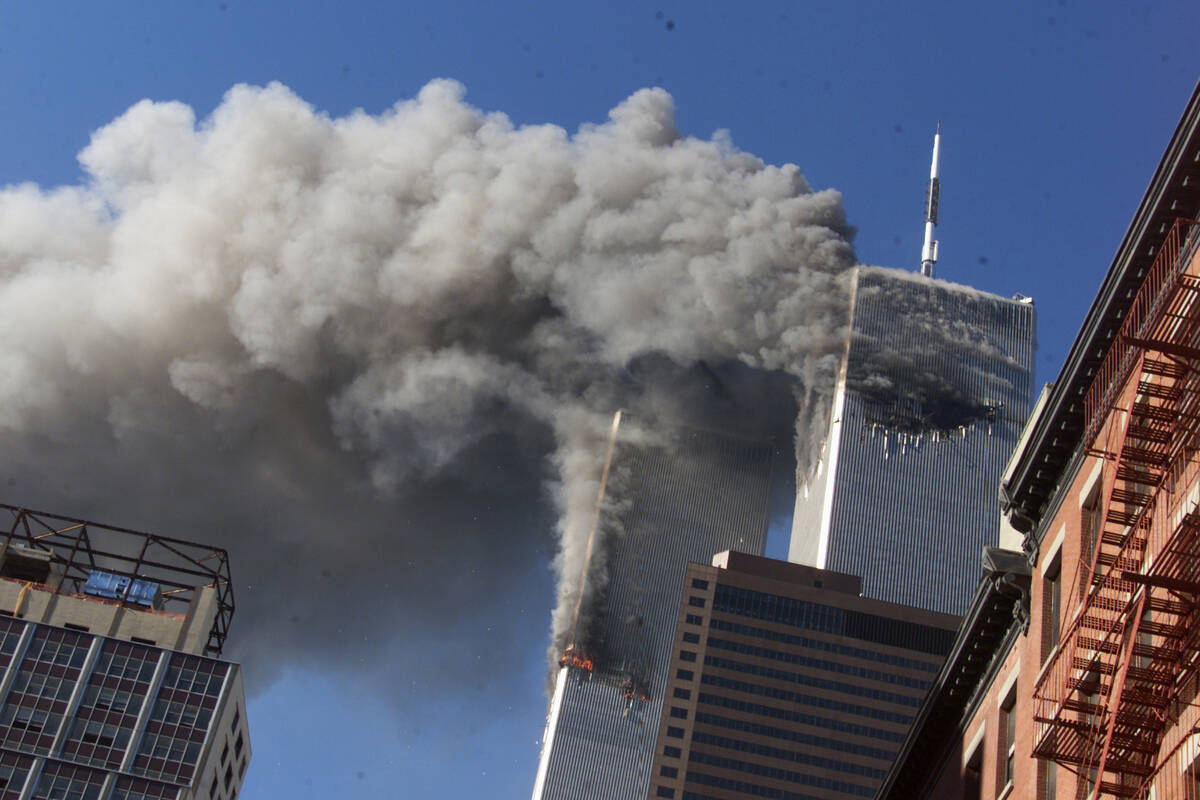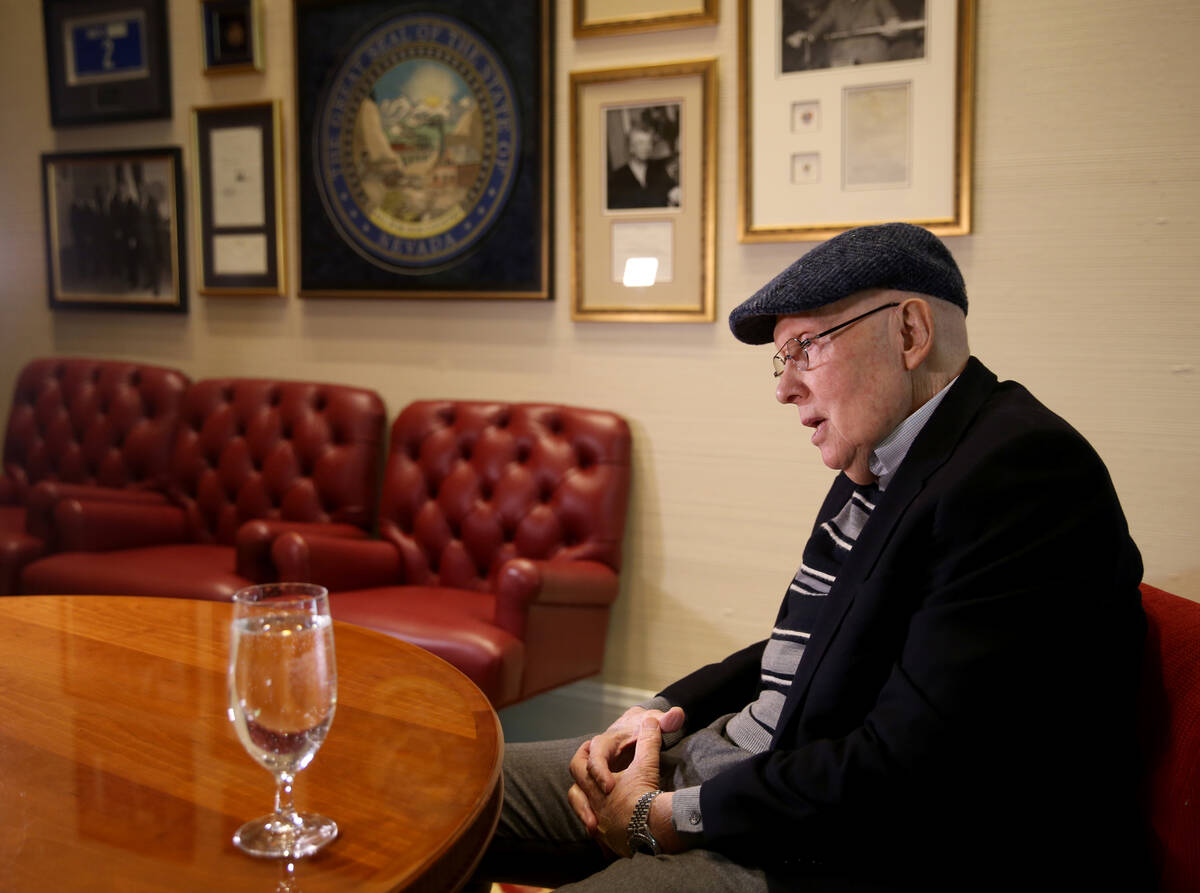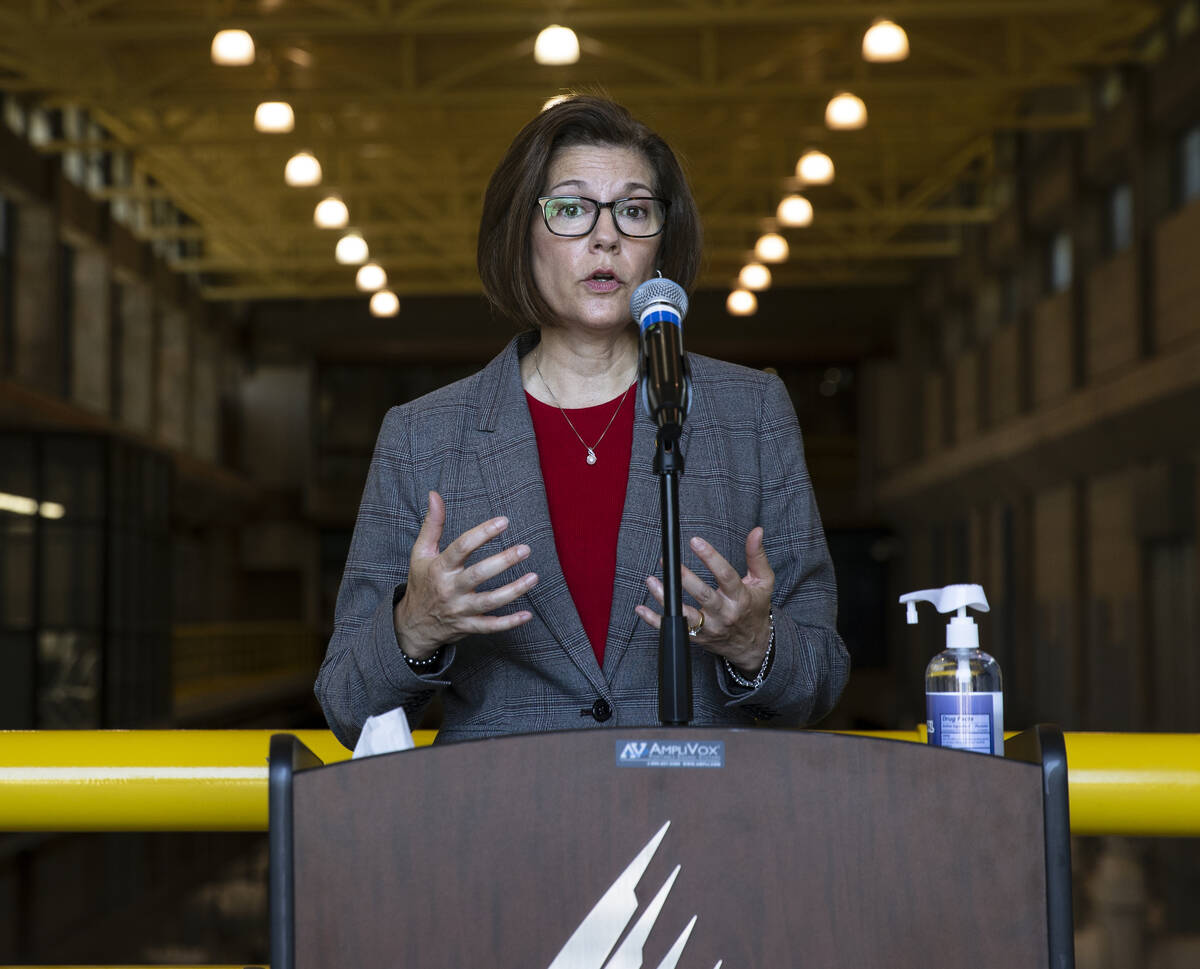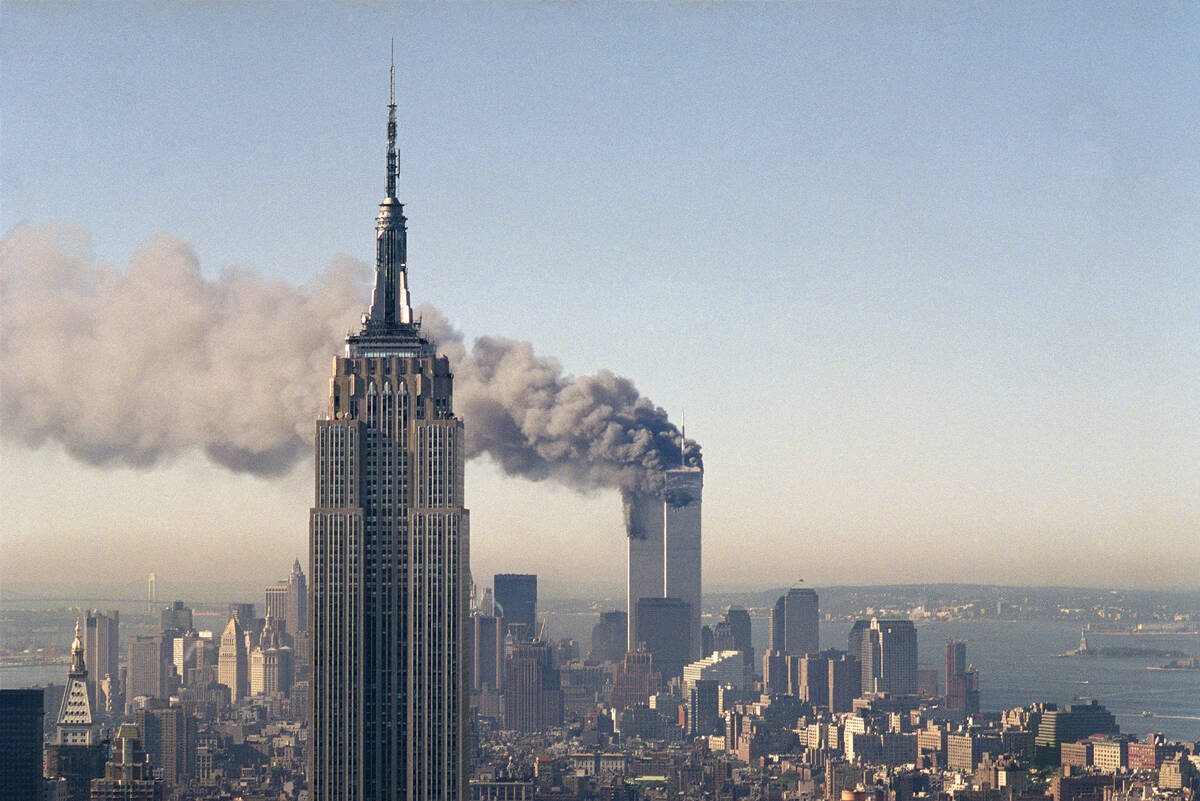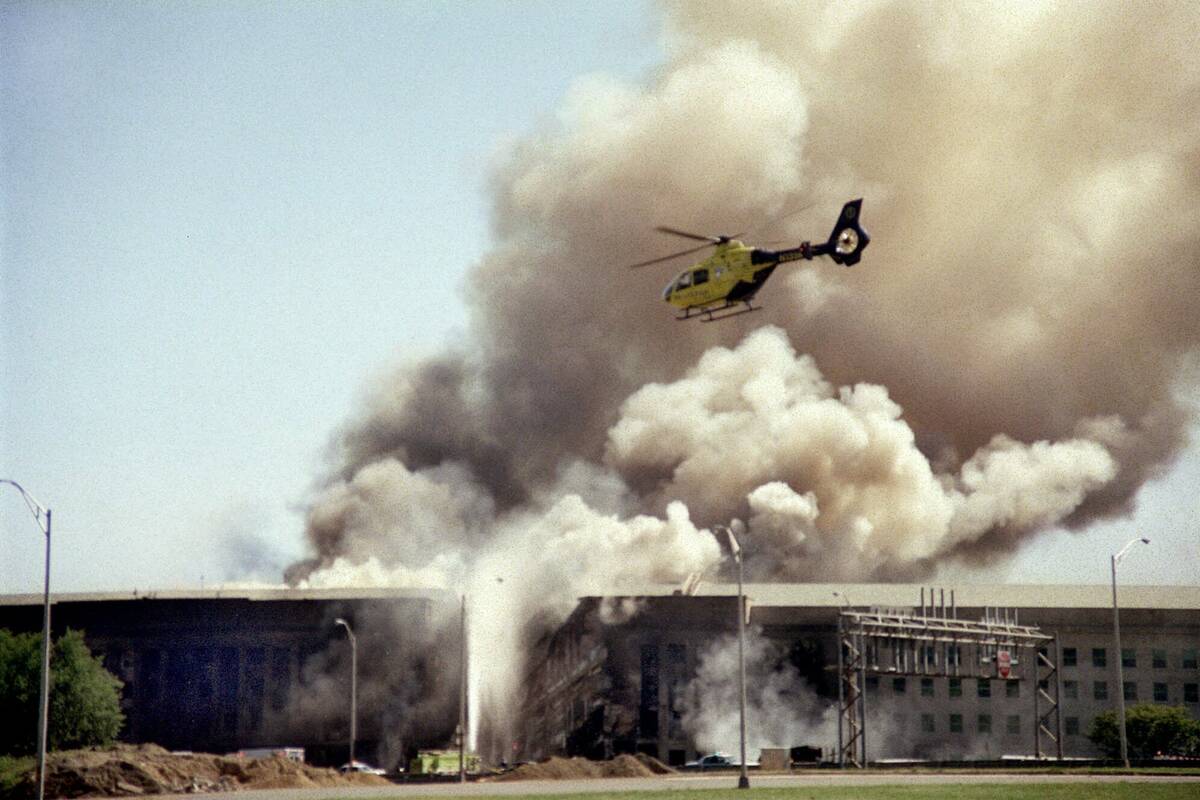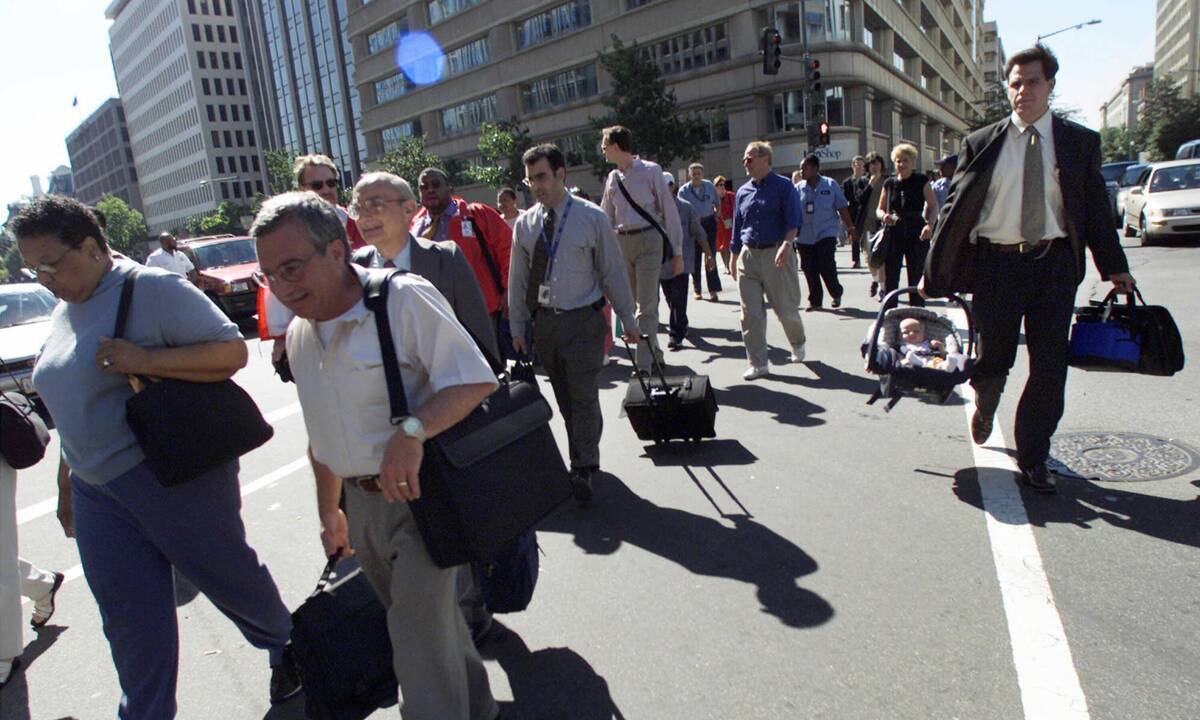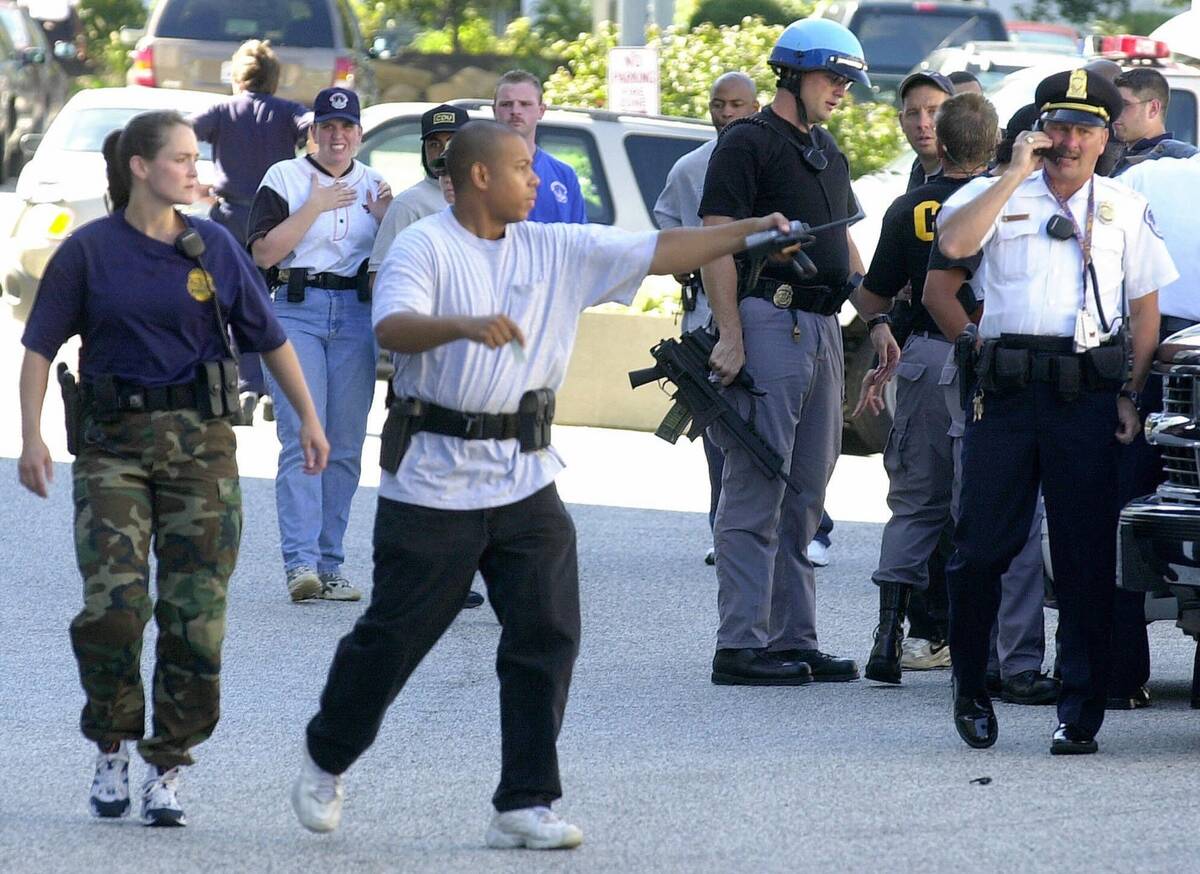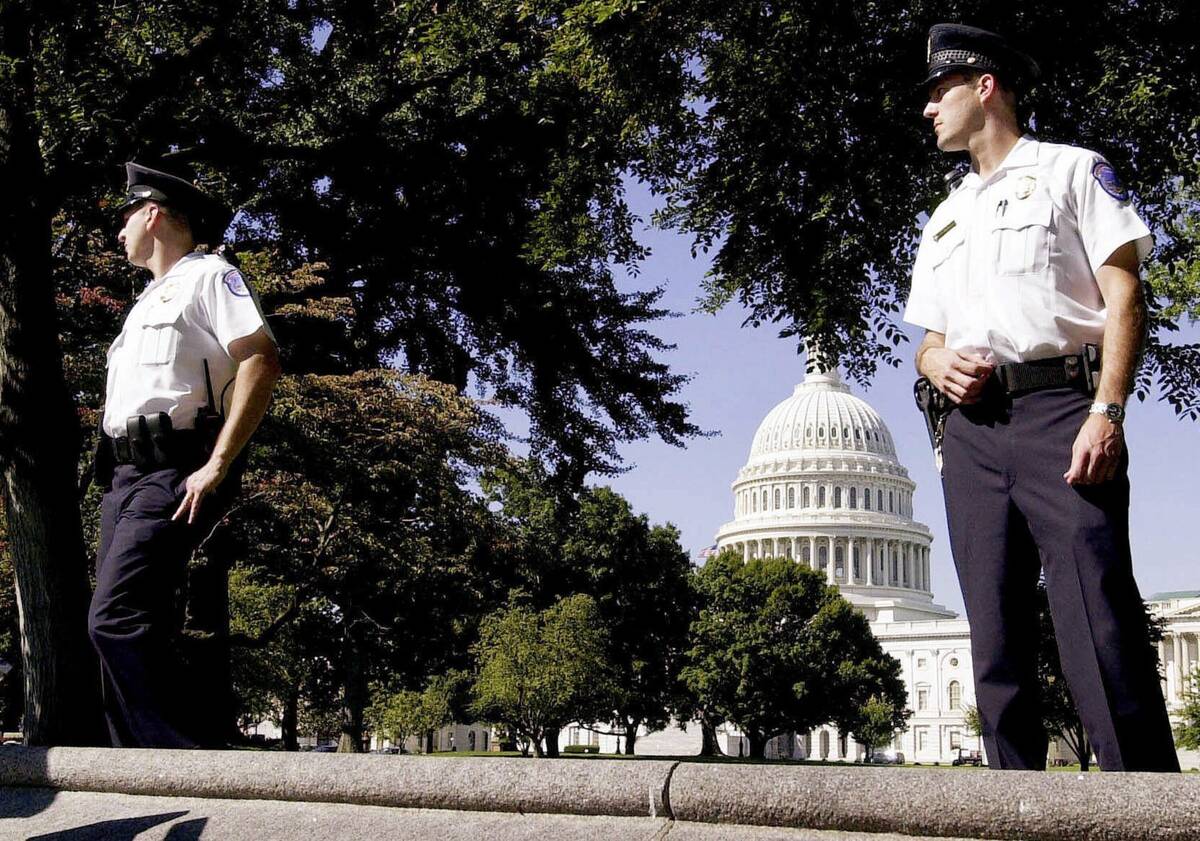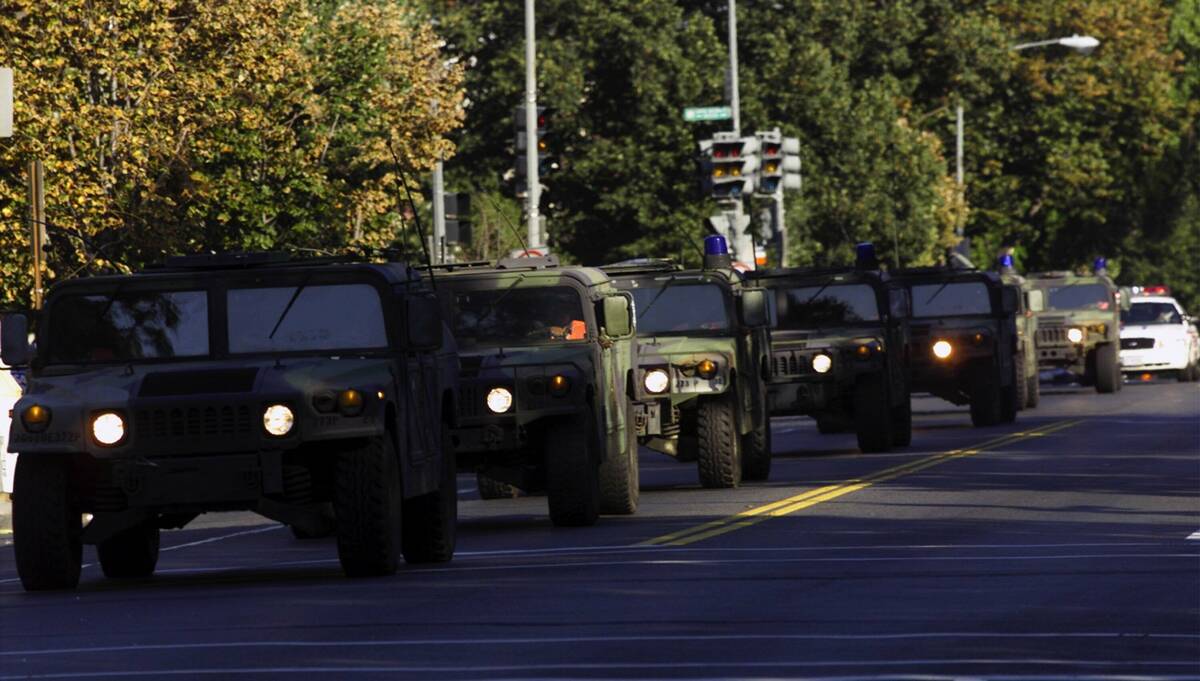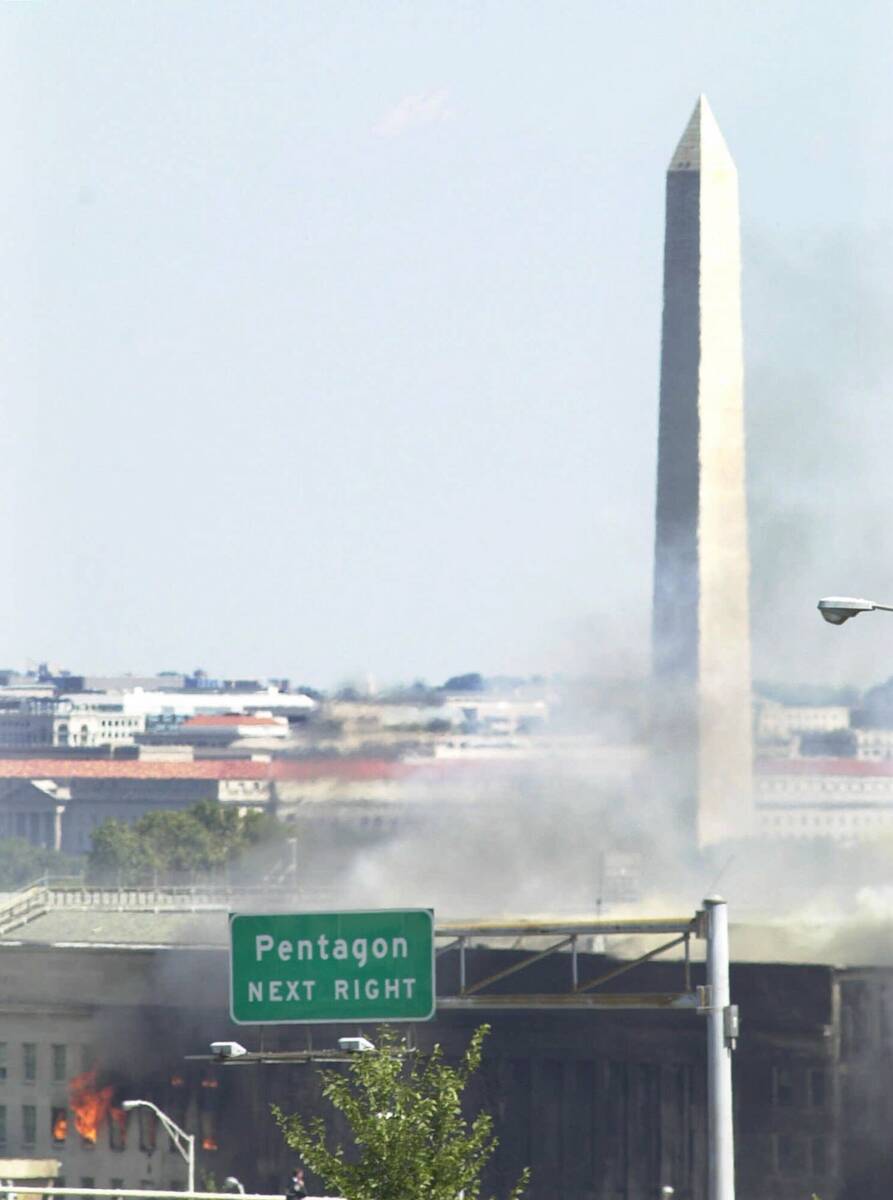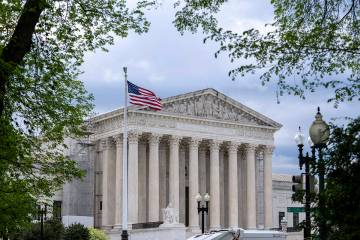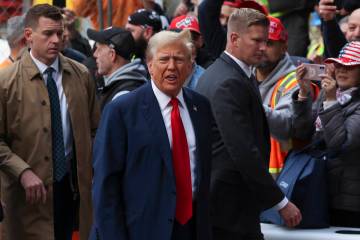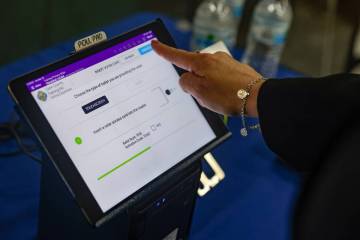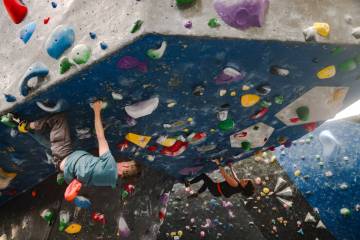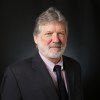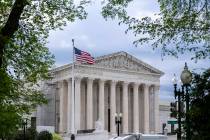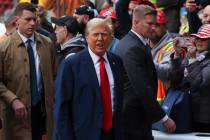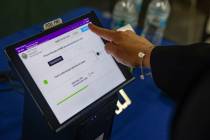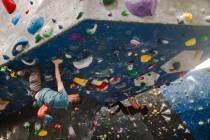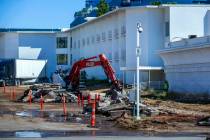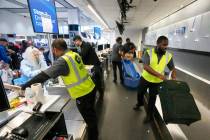‘Mass pandemonium:’ Nevadans remember day of terror in Washington
WASHINGTON — What started as a routine day at the Capitol quickly turned to bedlam with terrorist attacks that would forever change American life.
A commercial jet struck one of the twin towers just before 9 a.m. at the World Trade Center in New York. Disbelief and speculation led people nationwide to think a horrible accident had occurred.
But then the second tower was struck by another passenger aircraft just after 9 a.m. Coincidence was ruled out.
It was Sept. 11, 2001.
“We didn’t know what was going on,” recalled former Sen. Harry Reid, D-Nev., the Senate Democratic whip at the time.
He had arrived early for a Democratic caucus meeting on the second floor of the Senate.
Then Sen. John Breaux, D-La., rushed into the room and said, “Something is going on.” Breaux turned on the television and lawmakers watched, spellbound.
Related: RJ reporter describes ‘shattering’ 9/11 experience near White House
In minutes, Capitol Police rushed into the room and grabbed Reid, who as whip was just under Senate Majority Leader Tom Daschle, D-S.D., in party leadership.
“They physically took me out of the Capitol,” Reid said in a recent telephone interview with the Las Vegas Review-Journal.
“Physically picked me up and carried me out,” Reid said.
By the end of the day, nearly 3,000 people had died in the worst terrorist attack against the United States.
Commercial aircraft on the East Coast, fueled for West Coast destinations, were hijacked by 19 men who directed them toward symbolic American targets in New York and Washington.
The attack was directed by al-Qaida leader Osama bin Laden in Afghanistan.
But on that morning, know one really knew who, or what, was behind the unfathomable carnage that was unfolding.
Evacuation of the Capitol began minutes after Reid was carried outside, where he was stuffed into a helicopter with his counterpart, Sen. Don Nichols, R-Okla., the Senate Republican whip.
The two were flown to an undisclosed location in West Virginia and into an underground complex with secure communication.
“It was scary, to say the least,” recalled Reid, speaking from his Henderson home weeks before the 20th anniversary of the attacks.
Another hijacked plane struck the Pentagon. Another was still in the air, heading toward Washington.
Reid acknowledged he felt disturbed. His wife, Landra, was at their home on 23rd Street.
“It was a very troubling time for both of us,” Reid said of the uncertainty, the chaotic activity and the unknown.
Reid would go on to become Senate majority leader during the Obama administration, when U.S. Navy SEALs shot and killed bin Laden in May 2011, nearly 10 years after the attack by Islamic extremists on 9/11.
U.S. Superior Court
Just blocks from the Capitol, on the morning of 9/11, at the U.S. attorney’s office for the District of Columbia, young prosecutor Catherine Cortez Masto was preparing for a sentencing hearing in federal court when her colleagues learned of the first tower being struck in New York.
She remembered colleagues watching the events unfold on television. Cortez Masto headed to the courtroom.
During the hearing, the judge did something Cortez Masto said was “unheard of.” The judge answered a ringing telephone. The bewildered judge then told the courtroom that an evacuation was underway.
“It was just mass pandemonium,” Cortez Masto, now a Democratic U.S. senator from Nevada, recalled in a recent interview with the Review-Journal.
“Literally, I just remember everyone trying to get out of the building,” she said.
Because cellphones were jammed, she could not contact her husband, Paul, a Secret Service agent who was at their home across the Potomac River in Alexandria. He was preparing to go to work at FinCEN, a financial intelligence agency under the Treasury Department located in Virginia.
Outside the courthouse, in an area known as Judiciary Square, the plaza was teeming with hundreds of people who were told to leave. But roads were closed, and the city’s subway was shut down, Cortez Masto recalled.
Then she heard a loud percussion blast.
“That loud explosion was the Pentagon,” she said.
A hijacked aircraft struck the headquarters of the Defense Department, where all branches of the military are headquartered.
“People were just screaming,” Cortez Masto recalled.
She and a colleague got to her car in an underground garage and began inching their way through traffic and the 14th Street bridge that crosses the Potomac River to Virginia.
With U.S. attorney’s credentials, Cortez Masto said, she and her colleague were allowed through roadblocks and onto the bridge and Interstate 395, which sweeps around the Pentagon to access other highways and expressways.
“There was not a car on the interstate,” Cortez Masto remembered.
She suddenly saw the scores of firefighters. Emergency lights. She heard the sirens.
“You could see the tail end of the plane,” she said.
It was American Airlines Flight 77, a hijacked airliner that crashed into the western side of the Pentagon.
There were 59 passengers and crew members aboard the aircraft.
All died, including educator Barbara Edwards, 58, of Las Vegas, according to the list of victims on the Pentagon Memorial.
Edwards was returning home to Nevada after attending a wedding in Connecticut, then visiting friends in Washington, when she boarded the ill-fated plane at Washington Dulles International Airport in Virginia.
Also killed at the Pentagon were 125 military and civilian workers. The six al-Qaida hijackers also perished.
Cortez Masto did not know that day about the death of Edwards. But the traumatic scenes that played out at the courthouse, and the smoldering Pentagon swarmed by first responders, remain vivid memories.
“To this day it was the most …” Cortez Masto began, before trailing off and halting. “I don’t have a word for it.”
When she made it to her Alexandria home, she notified her family that she was OK.
Outside, she remembers an eerie silence. Reagan National Airport was closed.
Only military jets patrolled above. They broke the sound barrier, causing sonic booms.
The White House
President George W. Bush was in Florida for an education event when he learned of the attacks in New York and at the Pentagon, and reports that another passenger plane was headed for the White House or Capitol.
At the White House, staff and media working in the West Wing and in adjacent office buildings were evacuated.
Black smoke streamed upward. White House aides who looked straight down 17th Street and across the Potomac River to the Pentagon could see the fire.
Secret Service agents brandished weapons and formed a cordon around the White House complex. Law enforcement officials began clearing nearby streets of pedestrians.
On the sidewalk, a vice presidential aide, Steve Ruhlen of San Antonio, was talking to Mary Matalin, a counselor to Dick Cheney.
As their conversation ended, he told a reporter that Cheney was in the bunker, an underground complex at the White House, constructed during the Cold War in case of a state-sponsored military or nuclear attack.
Bush, in a televised interview a decade later, said that while away from Washington, he ordered commercial passenger jets, deemed to be a terrorism threat, to be shot down by military aircraft. He said it was the hardest order he had ever issued.
At the top of Lafayette Square, where journalists gathered, cellphones ceased to work. At least one phone did. Don Gonyea of NPR repeated to colleagues that he was told that another plane might be coming to Washington.
United Airlines Flight 93 from Newark, New Jersey, to San Francisco was hijacked and headed for Washington when passengers, who became aware of the previous crashed airliners, decided to rush the cockpit and overtake the hijackers.
The Boeing 757 crashed in a field in Pennsylvania, killing 40 people. It had been headed for the Capitol, according to the National Park Service.
Senate Russell Office Building
While Bush was in Florida that morning, first lady Laura Bush was at the office of Sen. Ted Kennedy, D-Mass., chairman of the Senate Health Education and Pensions Committee. She was to testify on the new Bush administration policy, “No Child Left Behind.”
When the attack was underway, the first lady was secluded in Kennedy’s Senate office in the Russell Building, one of three granite structures that house senators and hearing rooms near the Capitol.
“She was holding in the Senate office until the Secret Service evacuated her,” said Jim Manley, a Kennedy spokesman, who would later work for Reid when he became Senate majority leader.
Outside the Senate building, helicopters hovered and people frantically moved about.
“It’s about the most scared I’ve ever been,” Manley recalled years later.
Manley said it took years to overcome some of the fear of that day.
“Any time I heard a helicopter, I would get really nervous,” he said.
‘God Bless America’
Bush spoke to the nation later that day. Reid and Nichols returned from West Virginia by helicopter to the Capitol.
Other lawmakers had returned to the Capitol, a symbol of American democracy, a place where presidents are inaugurated and where each state is represented in Congress that has legislated under the dome since 1800.
It had been a long day, Reid remembered, but there was an impromptu gathering of lawmakers, Democrat and Republican, on the Capitol steps. Reid said Sen. Barbara Mikulski, D-Md., led the group in the song “God Bless America.”
Not a good singer, Reid said he followed his mother’s advice and just moved his lips.
But he was touched by the show of strength and unity of his colleagues.
Henry Bonilla, a Republican congressman from Texas, remembered it as well. The political divisions of hyper-partisan Washington were cast aside as lawmakers joined together.
“There was a spontaneous gathering on the Capitol steps,” Bonilla recalled. “It was very emotional. Everyone felt united.”
Still, no one knew what was next.
Days later, a U.S. aircraft inadvertently ventured into restricted airspace, prompting U.S. military jets to intercept, recalled Bonilla, a member of the House Appropriations subcommittee for defense.
It was the governor of Kentucky, but the alarm startled an already-skittish Washington.
“I remember feeling the blood rush,” Bonilla said about the incident and anxiety. “You could be next.”
Cortez Masto spent the following days going into the office. “It was just as bad,” she said, with law enforcement officers retelling their experiences, reliving the trauma.
“Horrific things.”
She worked with many of the first responders who were at the Pentagon.
Then Washington was plunged into another horror just weeks later when anthrax was mailed to officials.
Even before Sept. 11, Cortez Masto and her husband were headed back to Nevada, where she had accepted a job to be assistant county manager in Clark County.
Now back in Washington as the state’s senior senator, Cortez Masto said “it’s important to continue to remember” the attacks of two decades ago.
“The loss of loved ones,” she said, “to understand what happened, and why, and that we make sure we do everything we can to make sure that never happens again.”
Reid, too, cited the lessons learned, as well as the courage that was shown.
He recalled the heroism of the Flight 93 passengers who overtook the hijacked aircraft and forced it to crash outside of Shanksville, Pennsylvania.
If not for those patriots, “there would have been thousands of casualties” at the Capitol, he said.
He also worried that day for Las Vegas, an international entertainment and tourism destination that could have been a target. The terrorists had visited the city before the attacks.
The attacks changed America. They changed how people traveled on aircraft, and security features were installed to prevent another tragedy of that scale. The Department of Homeland Security was created by combining 22 federal agencies.
Bush deployed the U.S. military in Afghanistan, a mission that lasted 20 years and ended just last month.
“We accomplished nothing but death and destruction. Afghanistan is a country that is run by tribal spirits,” Reid said.
“I support President Biden in getting out of there,” said Reid from his Henderson home. “Getting out of Afghanistan is something I support.”
Contact Gary Martin at gmartin@reviewjournal.com. Follow @garymartindc on Twitter.



